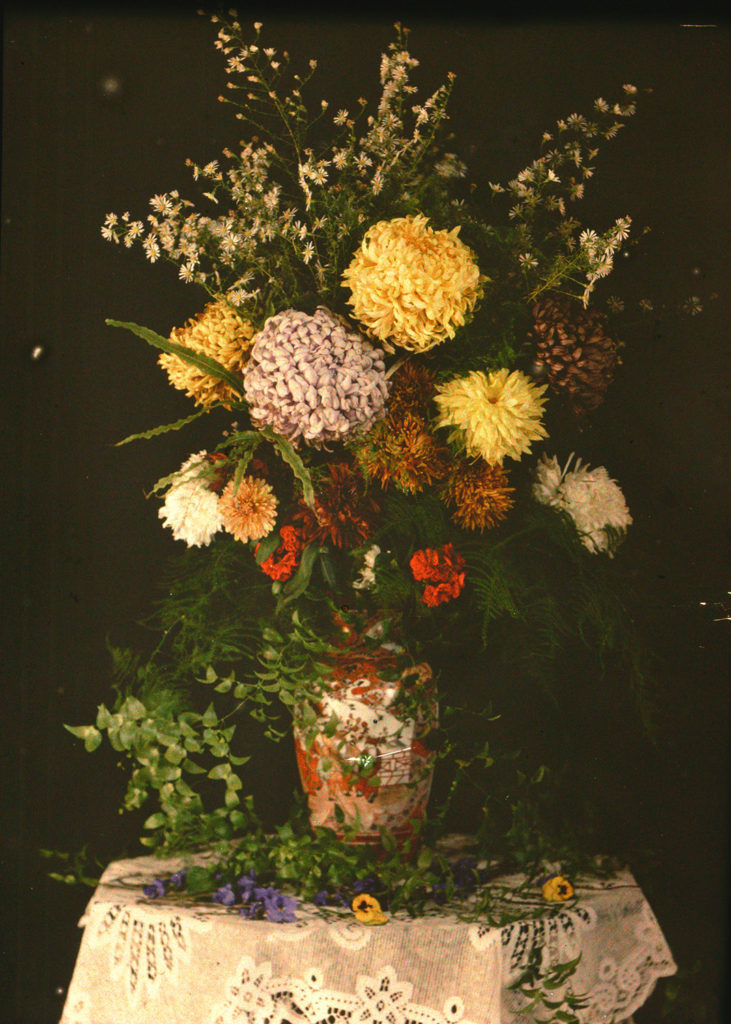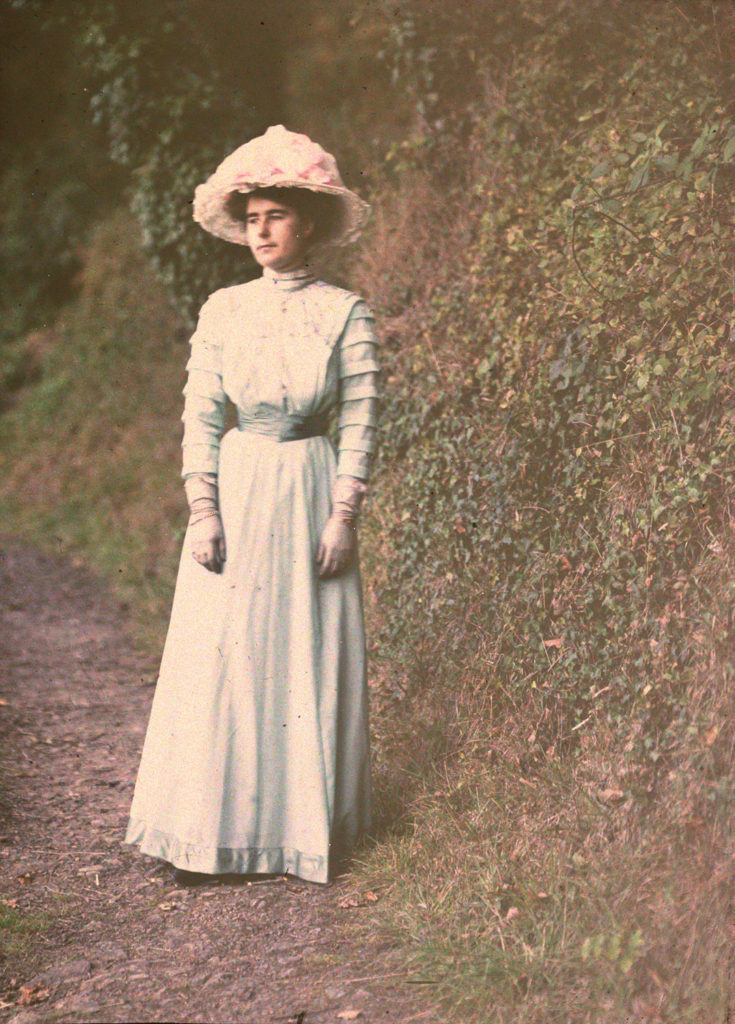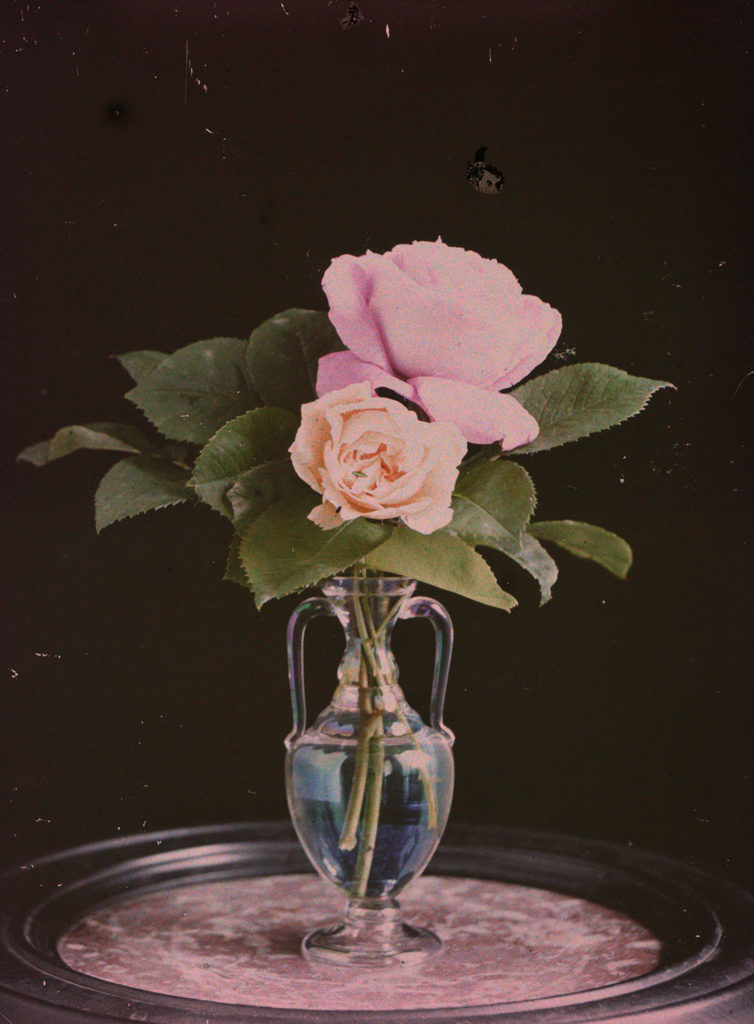Autochromes is a material which was once used for colour photography, consisting of a photographic emulsion applied over a multicolored screen of minute starch grains dyed red, green, and blue-violet. This effect was achieved by getting a glass plate and coating it with a latex-based varnish and covered with a thin, regular layer of grains of potato starch dyed green, blue, and red-orange. In order to achieve the negative element of this type of photograph, one side of the glass would be covered with a thin layer of collodion (a flammable syrup) containing ammonium or potassium halides (iodide or iodide and bromide). The collodion is richer than the other substances which creates the negative, producing the whitish image. allowing it show up better against the dark background used when viewing the final outcome.
Emile F. Guiton:
The founder of the Societe Jersiaise Photographic Archive had a passion for capturing colour photographs, during the begining of colour photography in the early 20th century. Emile captured two categories when using the autochrome technique: still life, fruit and flowers showcasing symbolism and domestic photographs, taking a more portraiture approach. He used still life photography in order for him to develop his skills, when using the chemicals to create the autochrome effect. In addition, the subject was still allowing for a controlled environment making the colour experimentation to be clearer. Emile would sell the autochromes in packs of four, which showed his experimentation with the chemicals. It is said that he created his work to capture the heritage of the island.
One of Emile’s most famous photographs was Valley de Vaux, which showcased two of Jersey’s landscapes in colour. One was a country environment and one was showcasing the urban life of Jersey, creating a clear juxtaposition. This photograph I could not find online, but from the description read on https://hautlieucreative.co.uk/photo20al/wp-content/uploads/sites/33/2019/09/The-Autochromes-of-Emile-Guiton.pdf it is clear that the work is trying to showcase the cultural change during this time period.



